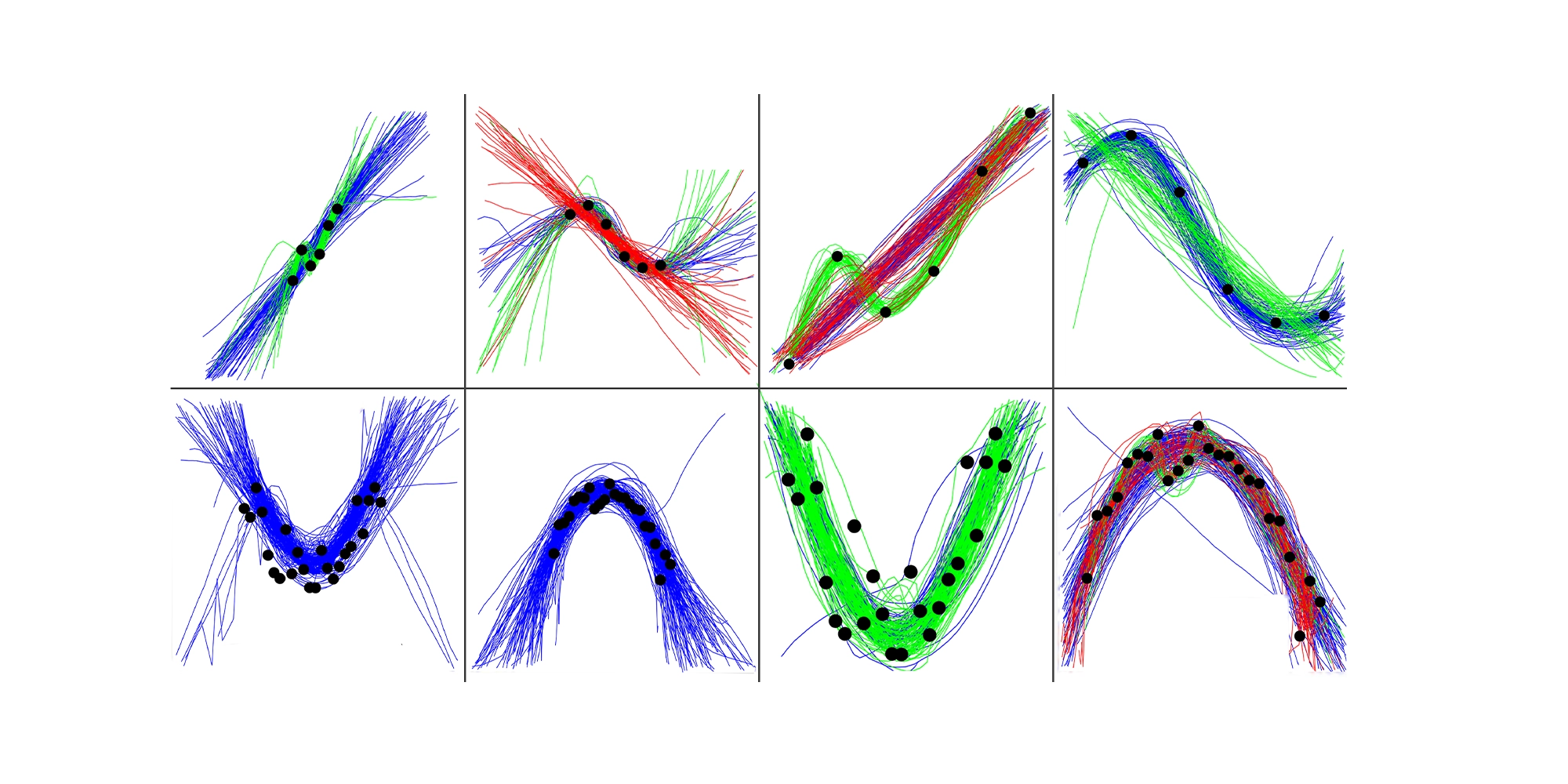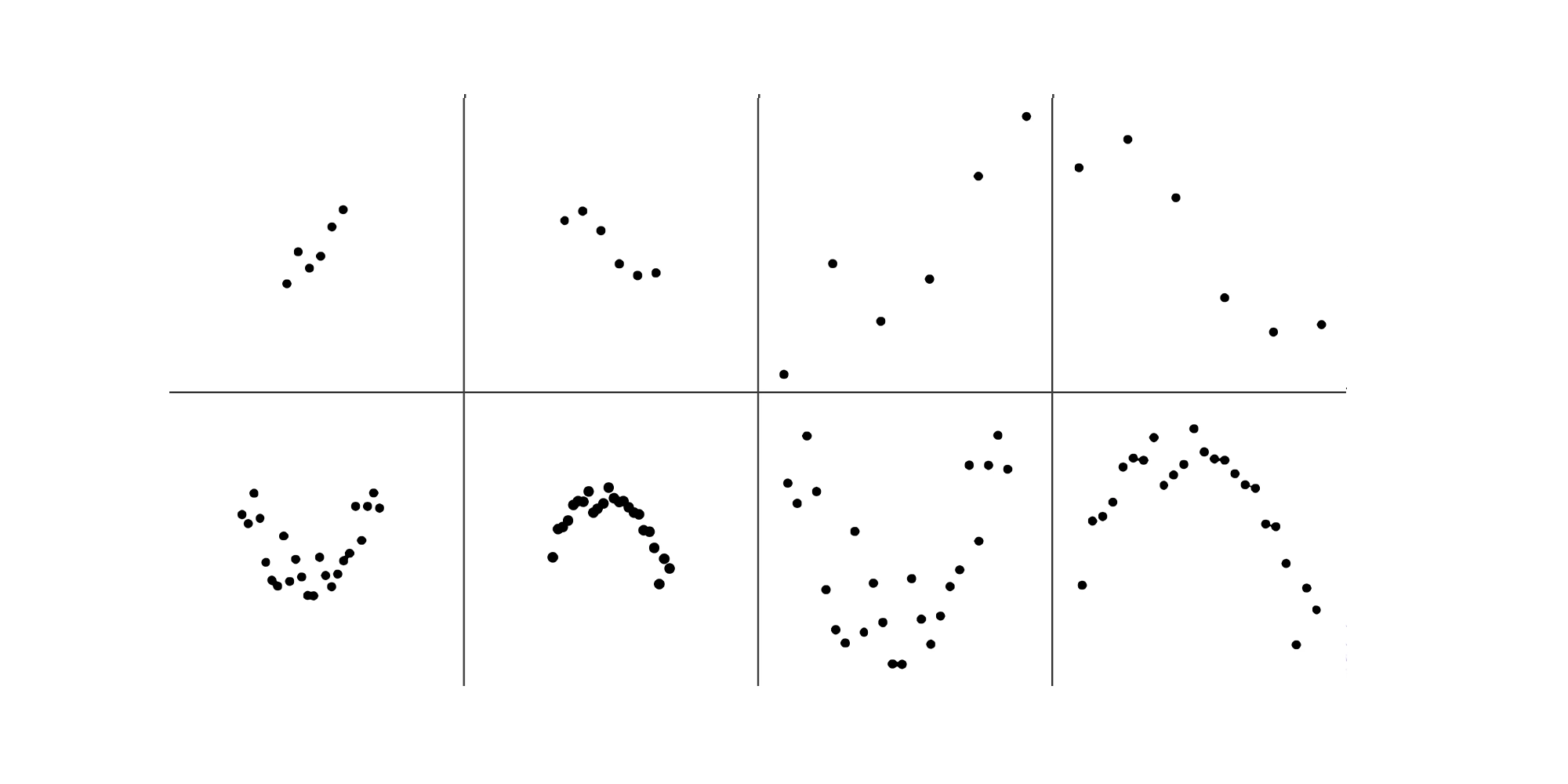By Associate Professor Daniel Little
Published on August 8, 2024


Students were asked to draw lines through scatterplots. Use the slider to see the results. Pictures: Supplied
Our research found several interesting things. Some people drew lines which were approximately polynomial mathematical functions, following the global trends in the data.
Others generated functions that tracked the local changes in the dots, moving up and down with each data point.
But this tendency to ‘see’ more of a local pattern was more pronounced when there were fewer data points.
To understand the different types of functions people drew, we used a statistical clustering technique to group functions which came from the same family. We identified three different types: linear functions, quadratic functions, and what we’ve called ‘data-tracking’ functions.
The linear and quadratic functions, define a simple relationship between all of the points in the graph – a global trend where the user prioritised simplicity over fit.

Health & Medicine
The meaning in our stars
The ‘data-tracking’ functions are more complex in the sense that they have a higher polynomial degree (they have more bends), but describe a simple psychological idea:
Perceptually, nearby points in the graph form a contour (we join the dots with our mind) and,
Psychologically, fluctuations in the points are meaningful – not just noise.
What this all means is that the way we interpret graphs requires an interplay of the conceptual (so asking ourselves ‘what is this describing?’) and perceptual (‘what am I seeing?’).
It also tells us that not everyone ‘sees’ data in the same way – our visual biases and prior experience may make us see more signal in the noise than is statistically warranted.
This article was first published on Pursuit. Read the original article.